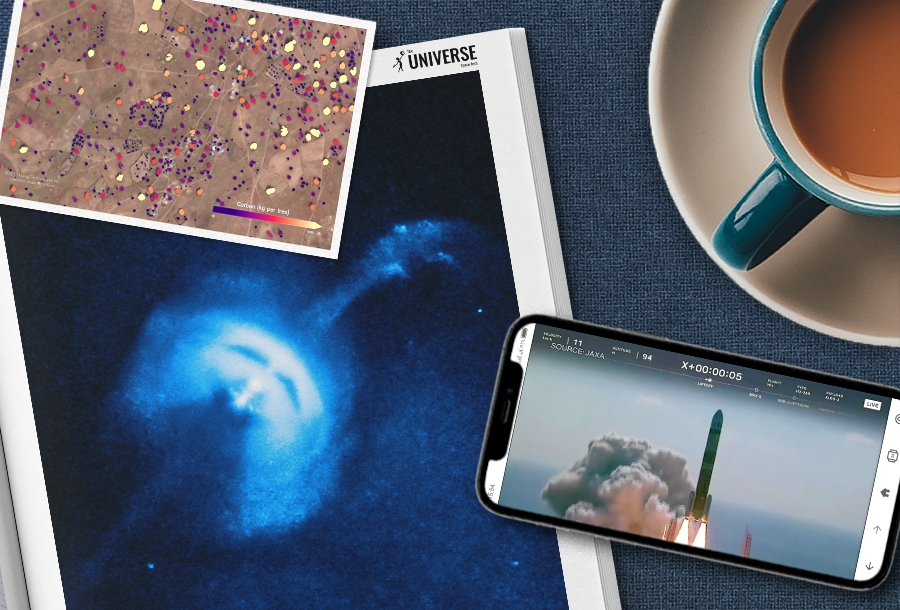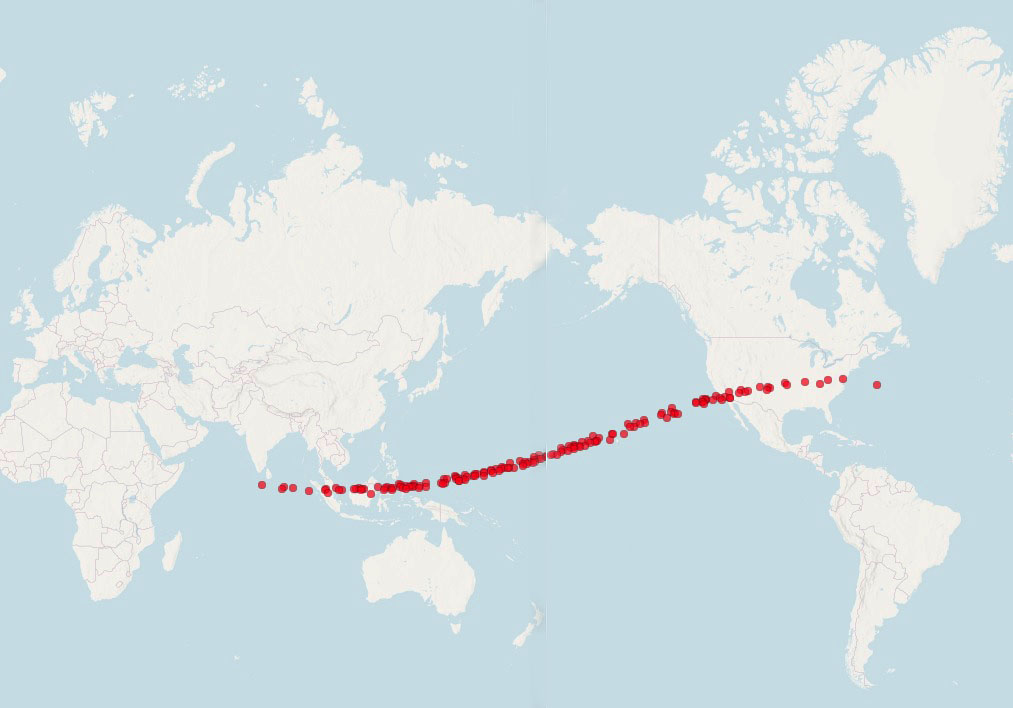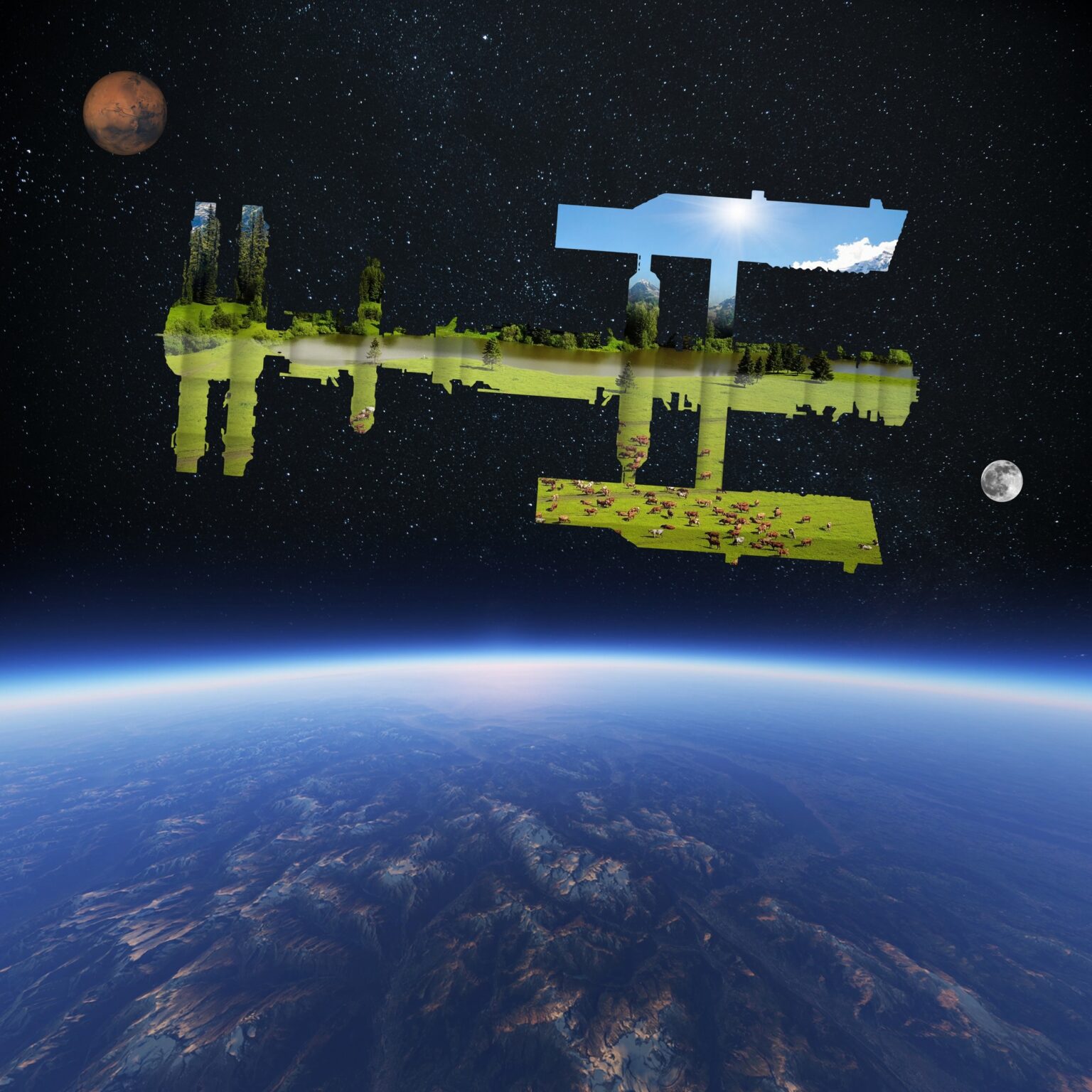Selection of the most interesting space news for the week: Astronomers photographed the pulsar wind; the “people’s satellite” helped destroy thousands of units of enemy equipment, and we tell how the ISS processes air and water.

“No thief, however skillful, can rob one of knowledge, and that is why knowledge is the best and safest treasure to acquire.”
― L. Frank Baum, The Lost Princess of Oz
“People’s Satellite” helps to destroy thousands of units of enemy equipment
The ICEYE satellite, acquired with donations from Ukrainians by the Serhiy Prytula Foundation, helped to detect and destroy thousands of units of Russian equipment. This is stated in the statement of the Defence Intelligence of the Ministry of Defense of Ukraine. The military intelligence of Ukraine began using the “people’s satellite” from September 24, 2022. During this time, the spacecraft’s resource made it possible to detect 360 tents in the locations of the Russian occupation army, as well as 7321 objects of enemy military and special equipment, in particular:
- 45 aircraft;
- 27 helicopters;
- 6 Iskander short-range ballistic missile system;
- 36 S-300 missile system;
- 12 Pantsir missile system;
- 11 radar stations;
- 10 pontoon bridges.
Thanks to ICEYE’s capabilities, a significant part of this list has been destroyed and is reflected in the daily reports of the General Staff of the Armed Forces of Ukraine.
Debut launch of a new Japanese rocket ends in an accident
On March 7, the Japan Aerospace Exploration Agency (JAXA) carried out the first launch of a new H3 launch vehicle. It ended in failure. On board is the Earth remote sensing satellite ALOS 3 (Advanced Land Observing Satellite 3). The H3 is a two-stage medium-class launch vehicle. It was created by Mitsubishi Heavy Industries to replace the currently used H-IIA and H-IIB rockets. Its height is 63 meters, diameter is 5.27 meters. Depending on the configuration, the H3 can be equipped with two or four solid-fuel boosters, and its first stage can be equipped with two or three engines. This gives the rocket the ability to put from 4 to 7.9 tons of cargo into a geotransfer orbit.
IXPE Observatory photographs pulsar wind

The IXPE and Chandra X-ray observatories have obtained an image of a supernova remnant in the constellation Vela. It demonstrates a phenomenon known as pulsar wind. The supernova remnant in the constellation Vela is located at a distance of about 800 light-years from Earth. It was formed about 10 thousand years ago as a result of the collapse of a giant star. This event led to the release of a huge amount of energy and the release of stellar matter. As for the surviving part of the core of the deceased luminary, it turned into a pulsar — a rapidly rotating neutron star, which is a source of periodic pulses of radiation.
NASA with the help of artificial intelligence counts trees in North Africa
Researchers from NASA were able to apply the machine learning method to analyze satellite images of North Africa. They tracked almost every one of the 9.9 billion trees growing in this arid part of the Earth.
Artificial intelligence was first manually trained to recognize trees. For this purpose, more than 90 thousand of their images were used in the pictures. Artificial intelligence was first manually trained to recognize trees. For this purpose, more than 90 thousand trees’ images were used in the pictures.
The study was conducted for North Africa from the Atlantic coast to the Red Sea. In general, machine learning has found approximately 9.9 billion trees on this giant arid territory. This figure may seem huge, but in fact it is significantly less than the estimates that have been given for the region so far.
ISS is forced to perform an evasion maneuver from the Satellogic satellite
The International Space Station (ISS) was forced to make a maneuver to avoid a potential collision. From time to time, the ISS is forced to take such measures so as not to collide with different objects in orbit. But this time, instead of avoiding space debris, the ISS was in danger of colliding with a functioning satellite. This incident highlights the problem of growing “traffic jams” in near-Earth orbit against the background of even greater deployment of satellites in recent years. The ISS crew learned about the risk of approaching the satellite 20 minutes before the orbit change maneuver. Dispatchers confirmed that the satellite would fly about 2.7 kilometers away. Despite the safe distance, it was decided to perform the maneuver.
Photo of the week

Astrophotographer Soumyadeep Mukherjee was lucky to have 10 clear nights over his home in Dhanbad, India, to create a unique timelapse image showing the cosmic conjunction of Venus and Jupiter. The photographer took pictures of Venus and Jupiter for 10 days (timelapse), when they met each other in the night sky and separated at a very short visual distance of half a degree. Although in fact the planets were at a distance of almost 600 million km from each other, for observers on Earth it seemed that the two points were next to each other.
Interesting figure — 2046

Astronomers have discovered an asteroid that with a small probability may fall to Earth in 2046. This was reported by representatives of the NASA Planetary Defense Coordination Center. The celestial body was found on February 26, 2023. It received the designation 2023 DW. The object is a 50-meter asteroid, part of a group of Atens. Shortly after the discovery, 2023 DW was assigned 1 point on the Torino Scale. It is used to assess the danger posed by celestial objects.
Something to read on the weekend

When we go to the mountains, we need to take water, food and medicines with us. Warm clothes will not be superfluous. And if we mention that the air pressure at altitude is no longer sufficient for normal breathing during physical exertion, then the oxygen in the cylinders is compressed. And now imagine that all this needs to be lifted into orbit — and you would understand why the designers of the International Space Station put into its design the possibility of reusing the maximum possible amount of resources.The editors of The Universe Space Tech tells how the ISS recycles air and water.
In addition, we are talking about the new book When the Heavens Went on Sale, which is being prepared for release in the USA, which contains four incredible stories of the formation of space startups. For Ukrainians, it is interesting because a special place in it is occupied by a story about the company Firefly Aerospace. Maxim Polyakov, a successful businessman from Ukraine, made it a few years ago.
Follow us on Twitter to get the most interesting space news in time
https://twitter.com/ust_magazine

